Shanghai Braised Rice Cakes (Nian Gao)
The magic happens in the final simmering when the starch from the rice cakes combine with the liquid cooked out of the cabbage to create a velvety, luscious sauce that coats everything. This easy one-pot meal is total comfort food. Utterly delicious and satisfying!
Even though I use the word "braised" in the title which may imply a long cooking time, it is only braised for 20-25 minutes. It isn’t surprising that this recipe was originally shared as one of the very first recipes on this blog because it is an enduring recipe that I make over and over. The combination of napa cabbage, shiitake mushrooms and pork is what I always consider the "Shanghai flavor trifecta", a combo that is somehow more than the sum of its parts and used in a handful of very popular Shanghai-nese classics.
I get many DMs on Instagram from readers who have made this recipe and have since incorporated it into their comfort food repertoire. It makes me so happy. I’d love to know what you think of this recipe too! Or if you have any questions I haven’t answered in this post, shoot it to me in the comments. I’m always happy to help.
Eat well + be well,
Sonia x
🎥 Watch video for Shanghai Braised Rice Cakes:
You May Also Be Interested in…
》SHANGHAI BOK CHOY VEGETABLE RICE
》SHANGHAI SPRING ROLLS
》SHANGHAI DUMPLINGS
Note: The key to preventing the rice cakes from sticking to the pot is to layer them in last, on top of everything else to they do not touch the pot during braising. They get incorporated at the end in a final stir just before serving.
Tips and FAQs
1. Use ground pork as a shortcut:
I started using ground pork instead of having to cut down a piece of pork. It is not traditional but saves a TON of time and most importantly, tastes just as amazing. In fact, my family prefers the mouthfeel of ground pork now. Win-win! When cooking this dish with ground pork, you can skip the marinade step and sauté it right in the pot and add the marinade ingredients as you brown it to save more time.
2. What are Rice Cakes (年糕 or “nian gao”):
Rice Cakes are made from white rice (sometimes brown rice) pounded and formed into thin discs or small logs. They are satisfyingly chewy. Source them from Chinese or Korean grocery stores. They are usually vacuum packed, in dried or frozen form. I buy the frozen sliced discs and keep a couple of packs in my freezer. They should be pre-soaked for at least 30 minutes up to several hours to cook more evenly and quickly.
3. What is Shaoxing wine and what to do if I don’t have it?
It is an amber-hued Chinese cooking rice wine that adds depth and complexity to stir-fries and sauces. Famously from Shaoxing, China but there are versions made outside Shaoxing as well – I often get a Taiwanese “Shaohsing Wine”. Generally inexpensive ($10 give or take) so grab the most expensive bottle. In this recipe, only 1 tablespoon is used to add aroma so it’s not a big deal to omit if you don’t have it in your pantry.
4. There’s a lot of napa cabbage!
My recipe calls for a shocking amount of cabbage: four to five pounds! If you order this dish in a restaurant, the amount of cabbage or other vegetables would be a fraction of that. I love pushing the amount of cabbage to the extreme in this dish to make it healthier and simply because we love the taste of napa cabbage. During cooking, it will seem impossible to fit this much into the dish, but napa cabbage contains a ton of water so it wilts down significantly during cooking. For 4-5 pounds of napa cabbage, look for either the massive ones sold at Korean markets, or more likely 2 smaller ones typically sold at conventional grocery stores.
5. I didn’t have that much cabbage and the dish turned out less saucy
Napa cabbage is very watery and is relied upon to release its liquid during cooking to create that wonderful velvety sauce! If you cut down the amount significantly, add some liquid back (broth or water) before the final cover and braise step. I’d say add at least 1 cup of liquid.
6. Can I make this with ground chicken (or turkey)?
Yes you can! If your ground chicken/turkey is on the drier side, you may want to add a drizzle of oil to the marinade to add some moisture.
7. Can I make this meatless?
Absolutely. I make a meatless version often too! To add back some more heartiness and bulk, add more shiitake mushrooms and/or add king oyster mushrooms which have a nice “meaty” feel when hand-shredded or sliced. I suggest browning them first to maximize flavours.
8. Reheat:
The rice cakes gets a bit mushier and less saucy as the liquid gets absorbed therefore this dish is at its peak deliciousness when enjoyed immediately. If reheat is needed, it is best done in the microwave.
7. Gluten-free:
Sub soy sauce with tamara for a gluten-free meal.
Shanghai Braised Rice Cakes with Napa Cabbage, Shiitake and Pork
This recipe was original shared in 2017 but has been updated in 2022 with new images, additional instructions and small tweaks to make it even better than before!


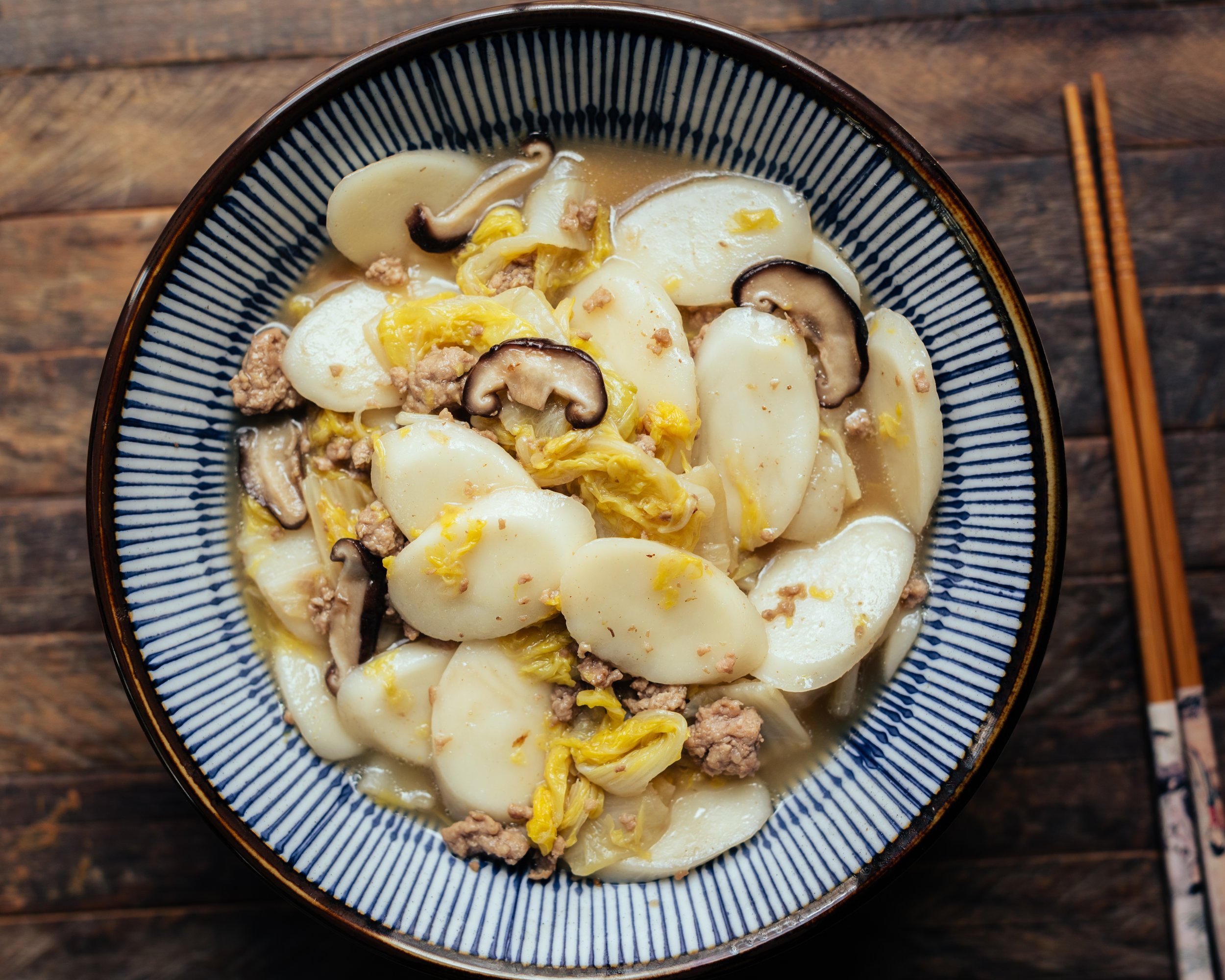



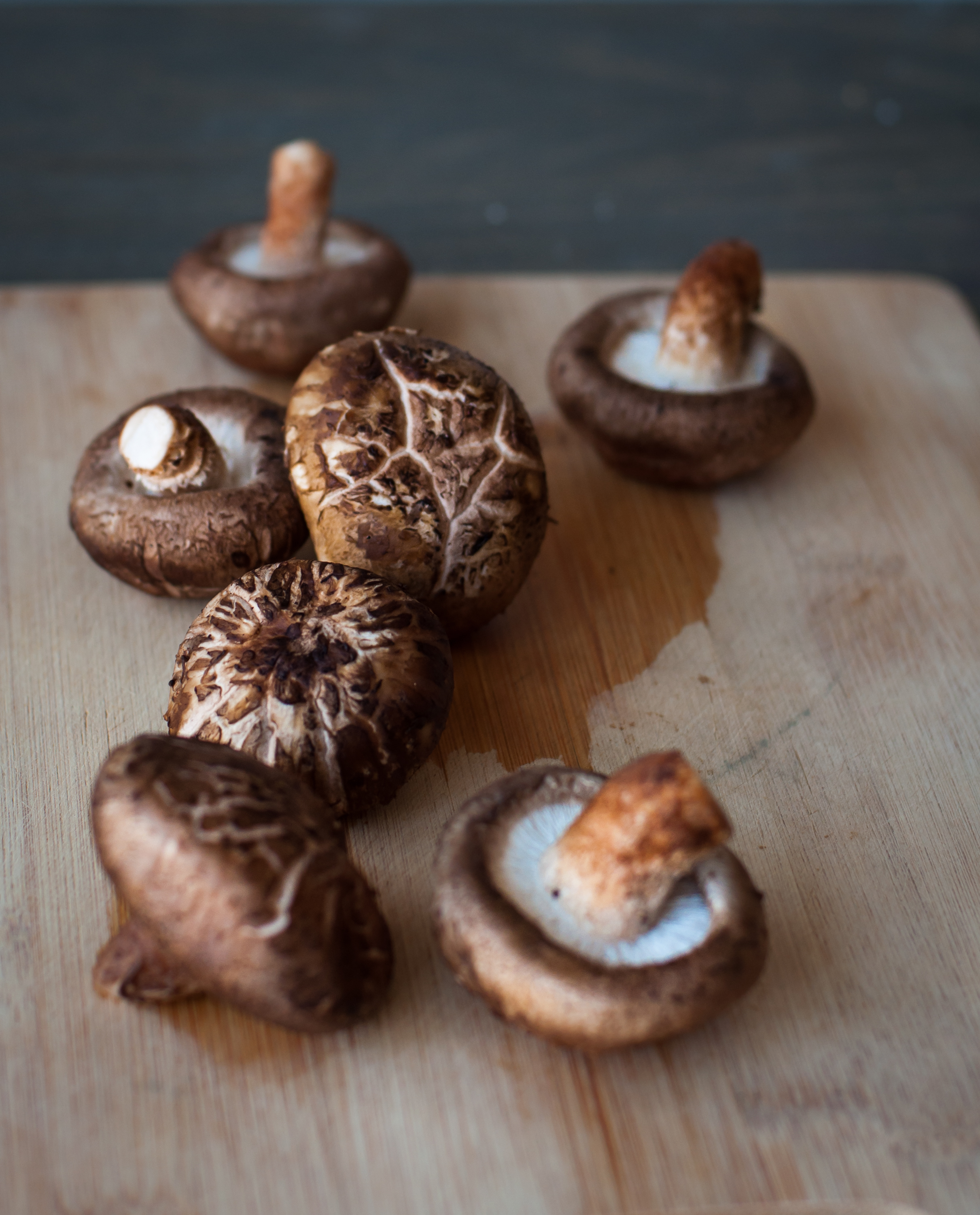
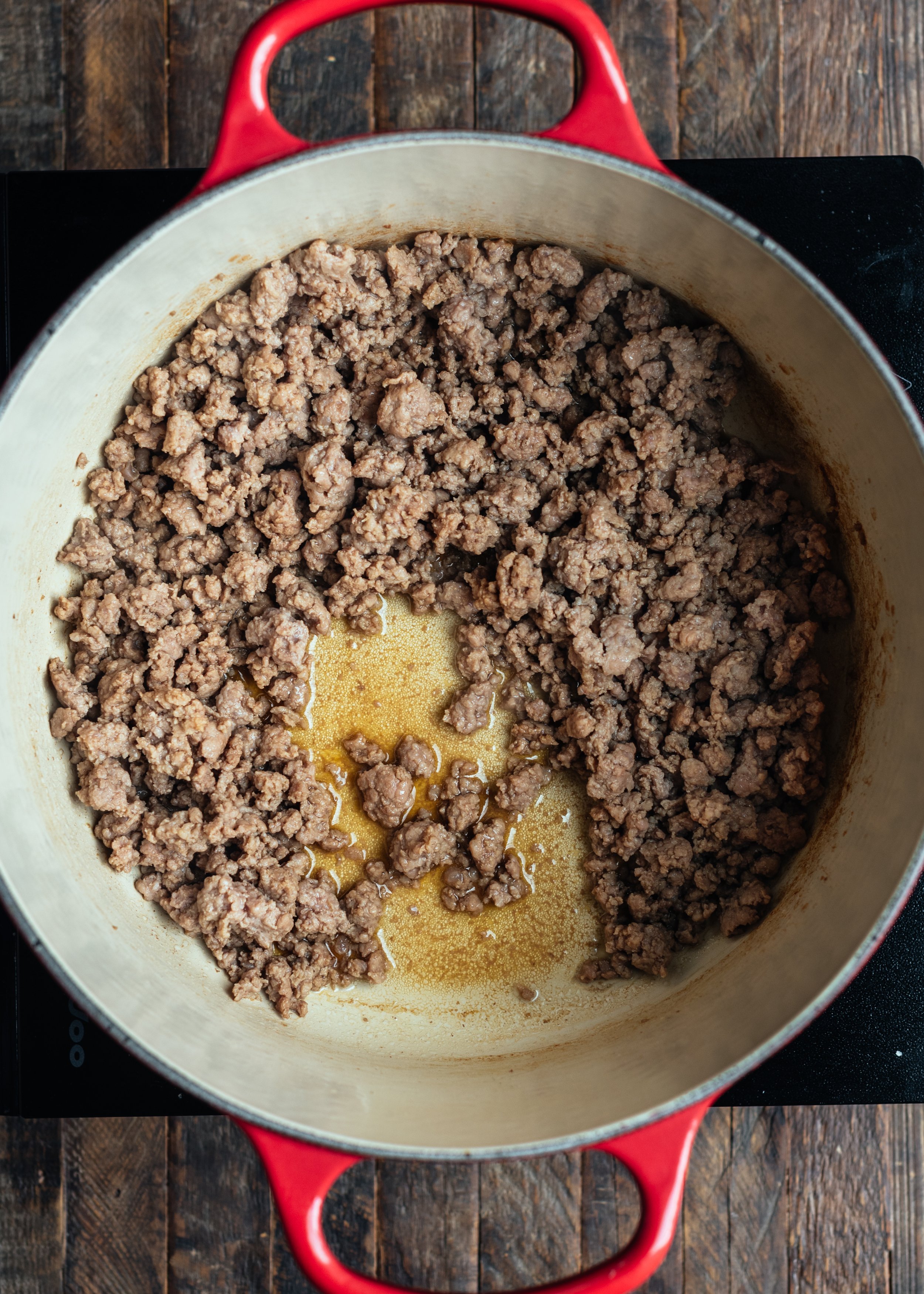
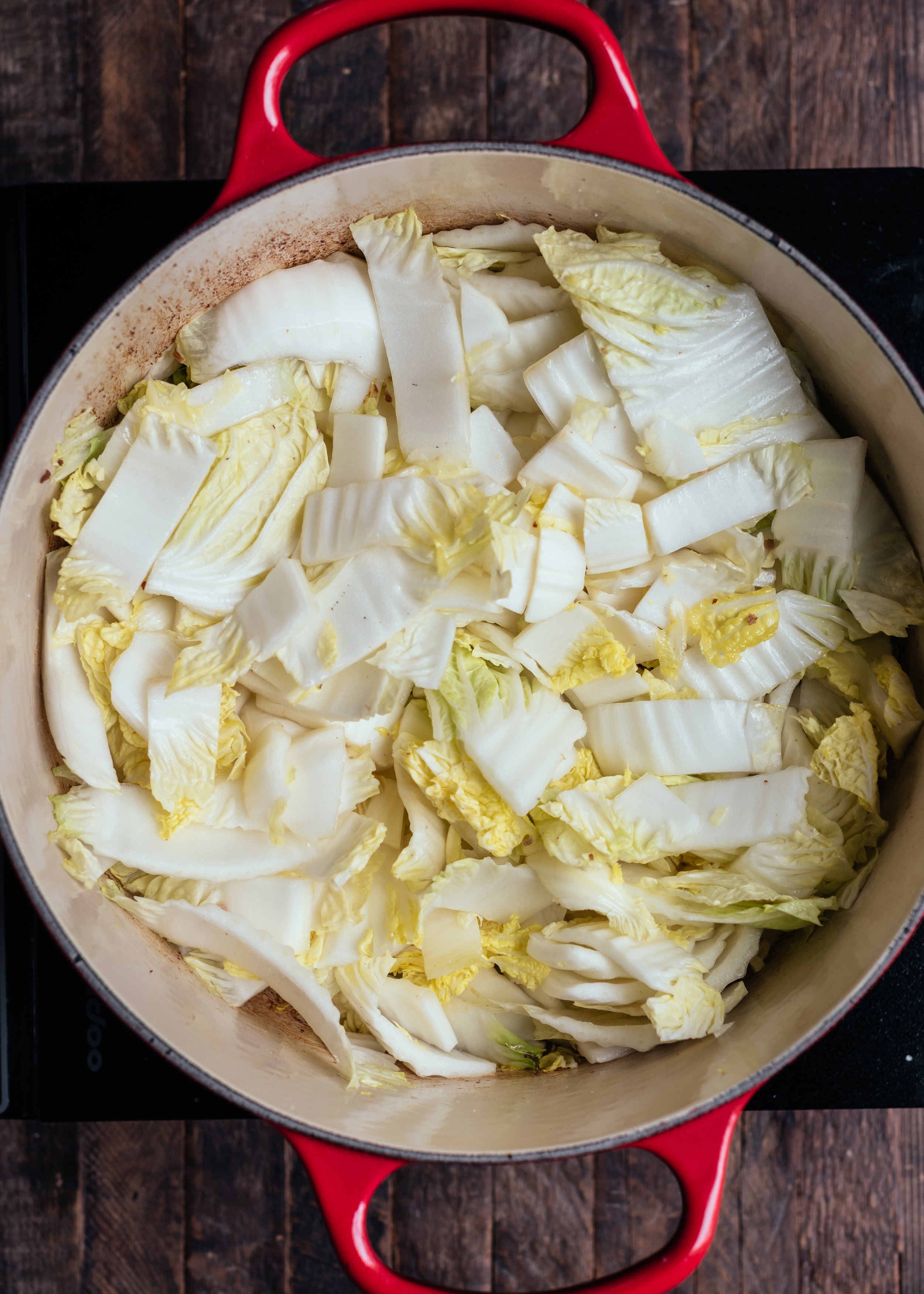
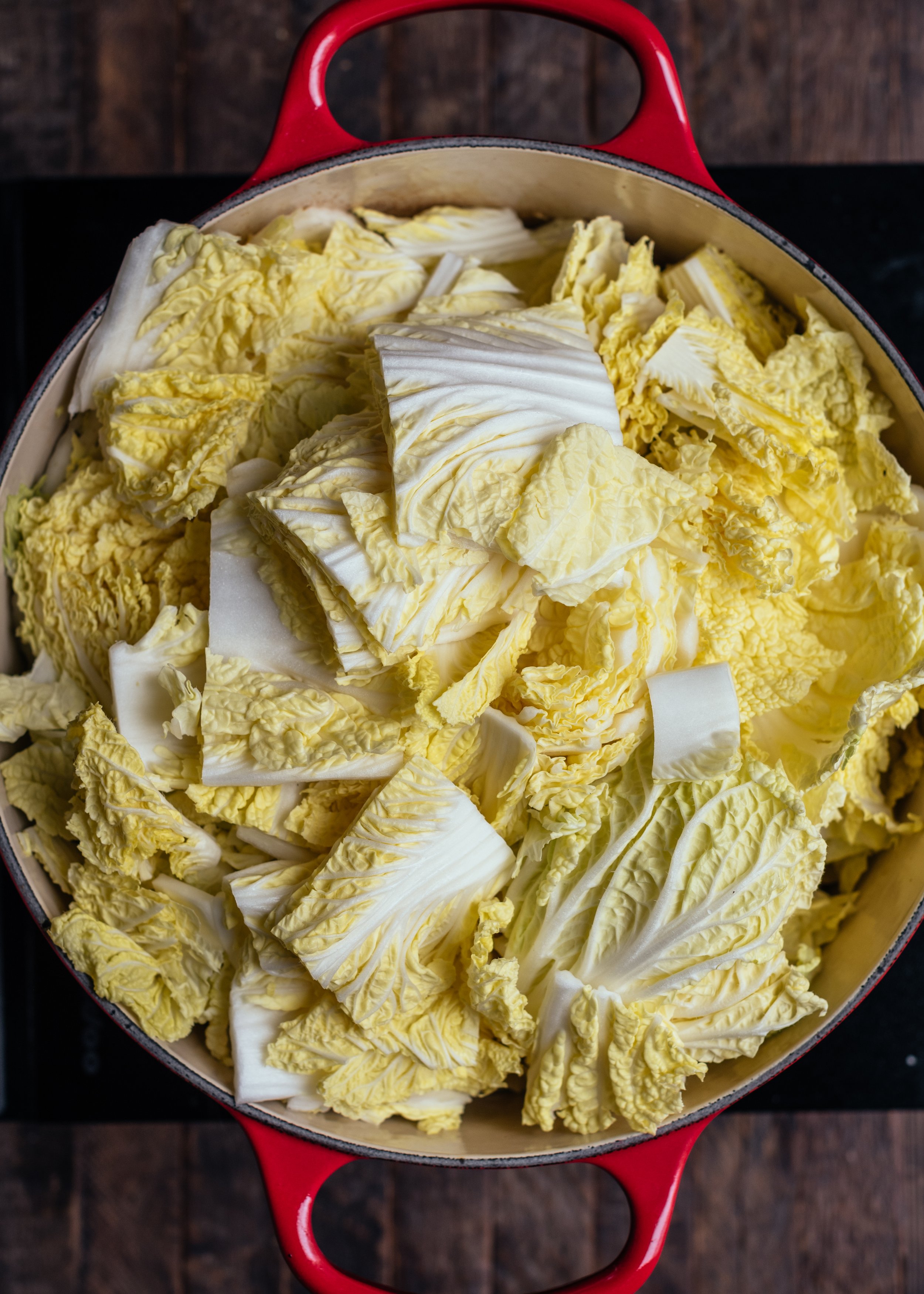

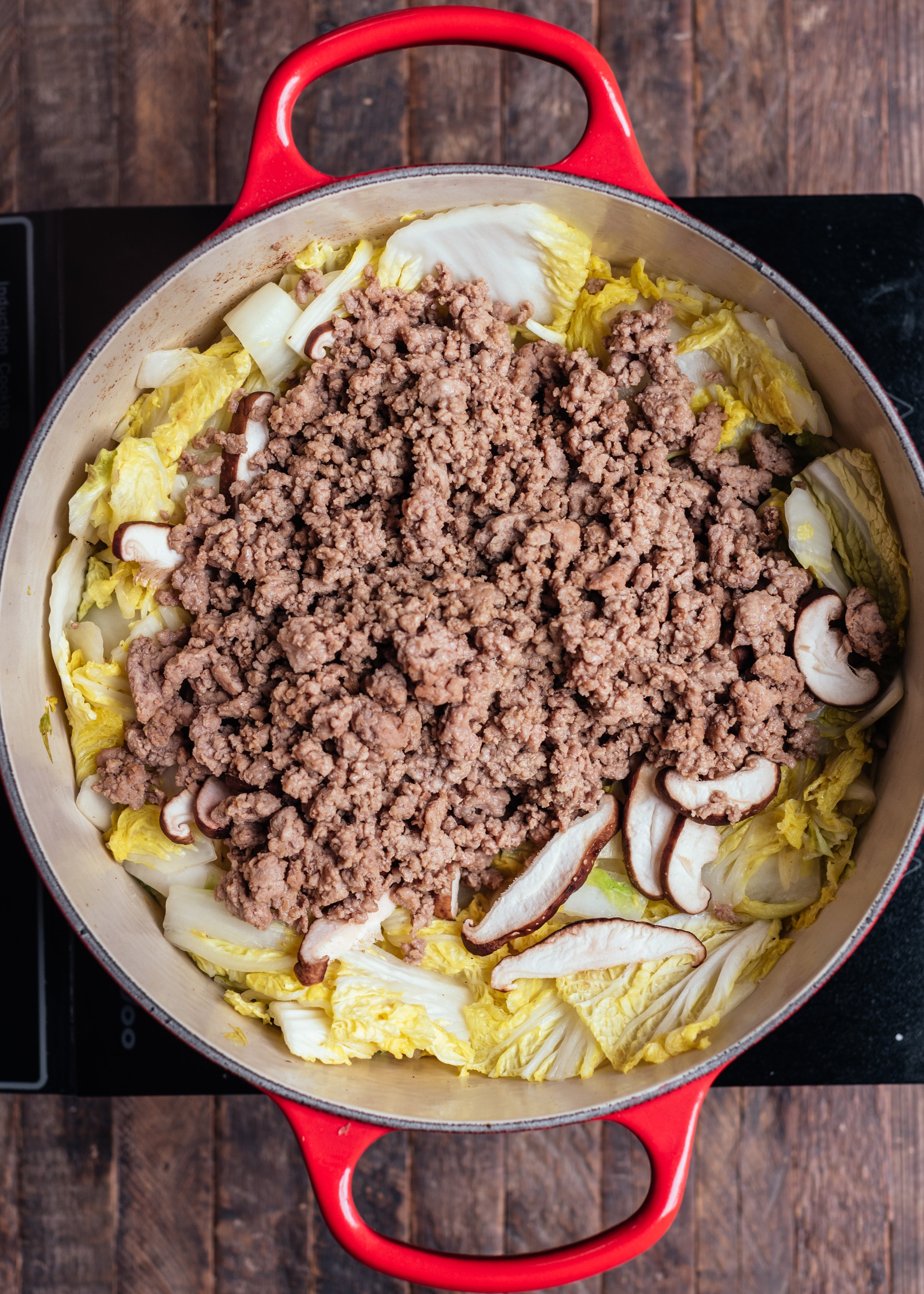
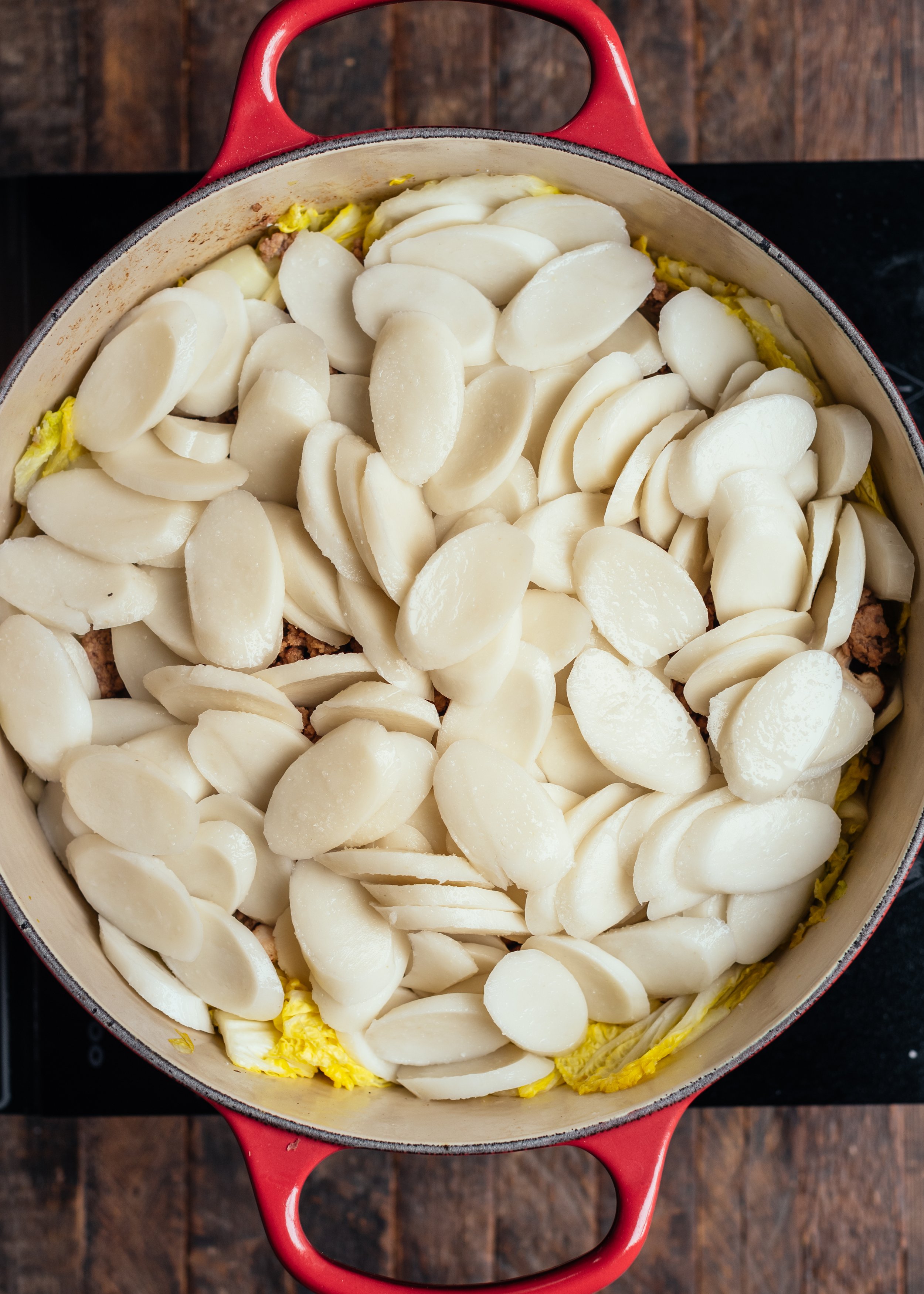












Hi, I’m Sonia
I share recipes inspired by my food cravings and what I make for my family. My role as a working mom of two girls, my life in Toronto Canada and my background as a Chinese immigrant from Hong Kong all inform the things I love, crave and create. This means an emphasis on wholesome recipes that are approachable for busy weeknights and fun recipes to make on weekends and for friends!
homemade food to nourish and indulge …
More about Sonia >